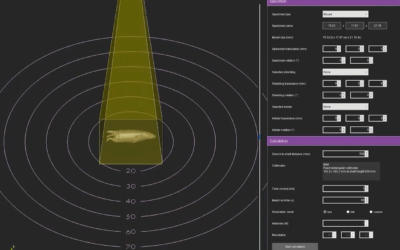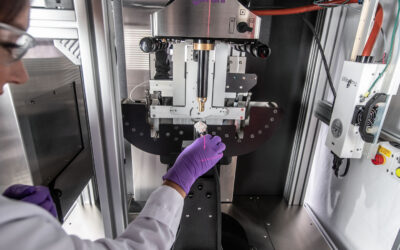In their study “Velocity-Based Adaptive Registration and Fusion for Fractionated Stereotactic Radiosurgery Using the Small Animal Radiation Research Platform” Paul J. Black, Deborah R. Smith, et al, implement a Velocity-based image fusion and adaptive deformable registration to enable treatment planning for preclinical murine models of fractionated stereotactic radiosurgery (fSRS) using the small animal radiation research platform (SARRP).
C57BL6 mice underwent 3 unique cone beam computed tomography (CBCT) scans: 2 in the prone position and a third supine. A single T1-weighted post-contrast magnetic resonance imaging (MRI) series of a murine metastatic brain tumor model was selected for MRI-to-CBCT registration and gross tumor volume (GTV) identification. Two arms were compared: Arm 1, where we performed 3 individual MRI-to-CBCT fusions using rigid registration, contouring GTVs on each, and Arm 2, where the authors performed MRI-to-CBCT fusion and contoured GTV on the first CBCT followed by Velocity-based adaptive registration. The first CBCT and associated GTV were exported from MuriPlan (Xstrahl Life Sciences) into Velocity (Varian Medical Systems, Inc, Palo Alto, CA). In Arm 1, the second and third CBCTs were exported similarly along with associated GTVs (Arm 1), while in Arm 2, the first (prone) CBCT was fused separately to the second (prone) and third (supine) CBCTs, performing deformable registrations on initial CBCTs and applying resulting matrices to the contoured GTV. Resulting GTVs were compared between Arms 1 and 2.
Comparing GTV overlays using repeated MRI fusion and GTV delineation (Arm 1) versus those of Velocity-based CBCT and GTV adaptive fusion (Arm 2), mean deviations ± standard deviation in the axial, sagittal, and coronal planes were 0.46 ± 0.16, 0.46 ± 0.22, and 0.37 ± 0.22 mm for prone-to-prone and 0.52 ± 0.27, 0.52 ± 0.36, and 0.68 ± 0.31 mm for prone-to-supine adaptive fusions, respectively.
It was concluded that Velocity-based adaptive fusion of CBCTs and contoured volumes allows for efficient fSRS planning using a single MRI-to-CBCT fusion. This technique is immediately implementable on current SARRP systems, facilitating advanced preclinical treatment paradigms using existing clinical treatment planning software.
This Xstrahl In Action was adapted from a article found on a National Library of Medicine website.






